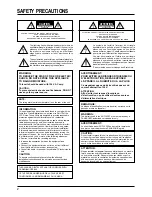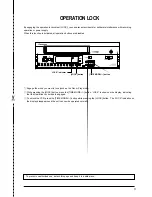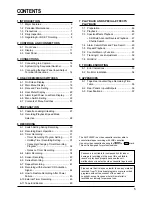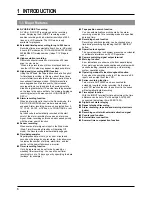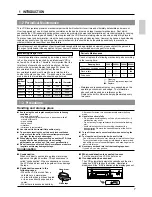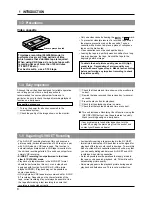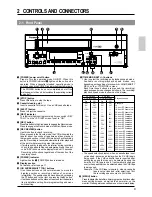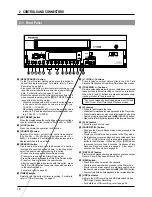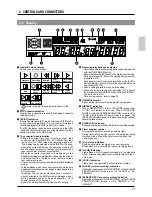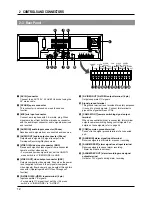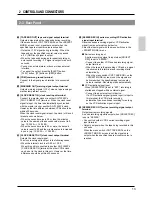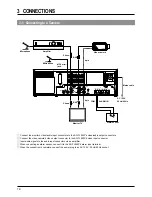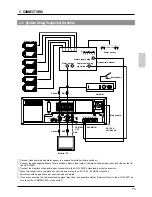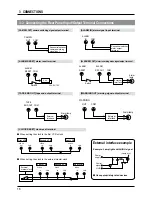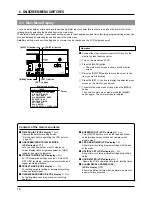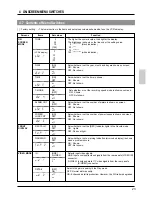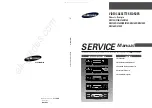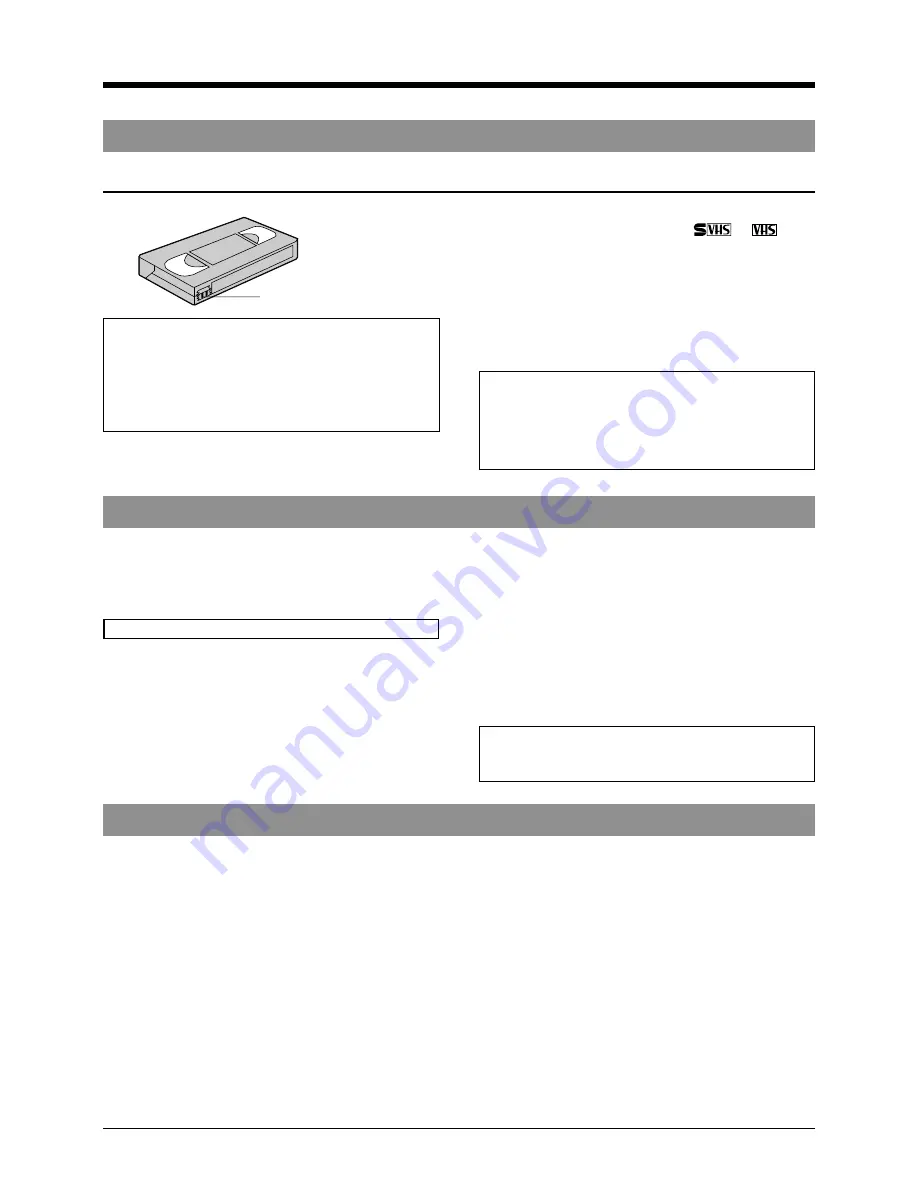
8
1-3 Precautions
Video cassette
Although this unit has been designed for reliable operation
over a long period of time, a daily inspection is
recommended to ensure optimum performance. In
particular, be sure to check the repeat recording/playback
function on a daily basis.
Inspection procedure
1
Turn on the power for all units connected to the
surveillance system.
2
Check the quality of the image shown on the monitor.
3
Check that the date and time shown on the monitor are
correct.
4
Rewind the tape recorded the previous day for several
seconds.
5
Press the play button for playback.
6
Check that the playback picture is normal.
7
Check that the recorded date and time are correct.
5
This unit includes a Recording Check function (using the
[REC REVIEW] button). Use these features to quickly
check recording quality on a daily basis.
1-4 Daily Inspection
Erasure prevention tab
• Only use video cassette bearing the
or
mark.
• To prevent accidental erasure of a recorded tape, break
the erasure prevention tab on the cassette. To use a
cassette with a broken tab, place a piece of cellophane
tape over the broken tab.
• Video cassettes cannot be used upside down.
• Leaving the tape in a partially wound condition for a long
time may damage the tape. Rewind the tape to the
beginning before storage.
To obtain the best picture quality, use an HG (high
grade) tape . Degradation of picture quality may
result with some types of tape. Make a test recording
before performing any important recording to check
the picture quality.
1 INTRODUCTION
Timelapse recording (24H-960H mode) is
performed over very long periods of time
which means that a durable tape is required.
When using VHS tapes, do not use tapes with
recording times of more than 120 minutes
(T-160/T-180 etc.).
For best results, use a T-120 tape.
If any problems are found after inspection, turn the
power off, unplug the mains plug from the socket, and
contact your Panasonic dealer.
1-5 Regarding S-VHS ET Recording
• Accidentally inserting a tape recorded in the S-VHS ET
format into a dedicated VHS deck that is not designed for
playback of this type could result in damage. To avoid this
kind of accident, mark cassettes labels in such a way that
you can easily distinguish between S-VHS ET and VHS
recordings when storing cassettes.
• As far as possible avoid operations that apply a load to
the tape, such as search playback, etc. This will result in
deteriorating picture quality.
• Noise may appear in the playback picture during search
playback and field advance. This is not a malfunction.
• The S-VHS ET recording feature of this unit ensures a
picture quality (horizontal resolution of 400 lines) on a par
with S-VHS when a VHS tape is used. This function is
automatically activated when a VHS tape is inserted into
the unit and recording started. This unit does not perform
normal VHS recording.
• S-VHS ET recording is not performed in the linear
slow (L12/L18/L24) mode.
• Playback of a tape recorded in the S-VHS ET format
should be performed on this unit, or on a video deck
equipped with function for S-VHS or S-VHS simple
playback (SQPB). (Playback may not be possible on
some video decks.)
• HG (high-grade) VHS tapes are recommended for S-VHS
ET recording. Depending on the characteristics of the
tape, correct recording may not always be possible. Use
the tape after making a test recording to ensure that
recording is conducted correctly.
Summary of Contents for AGTL950 - TIME LAPSE VCR
Page 4: ...4 ...


